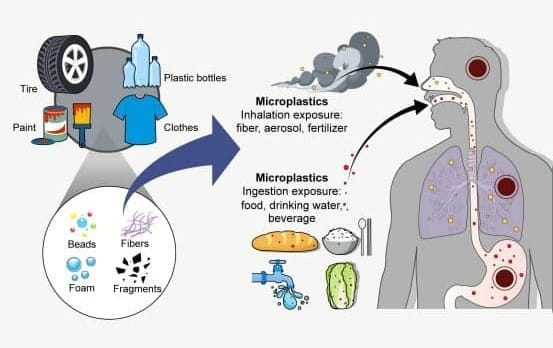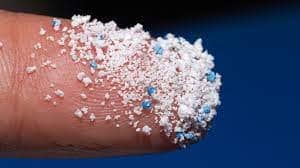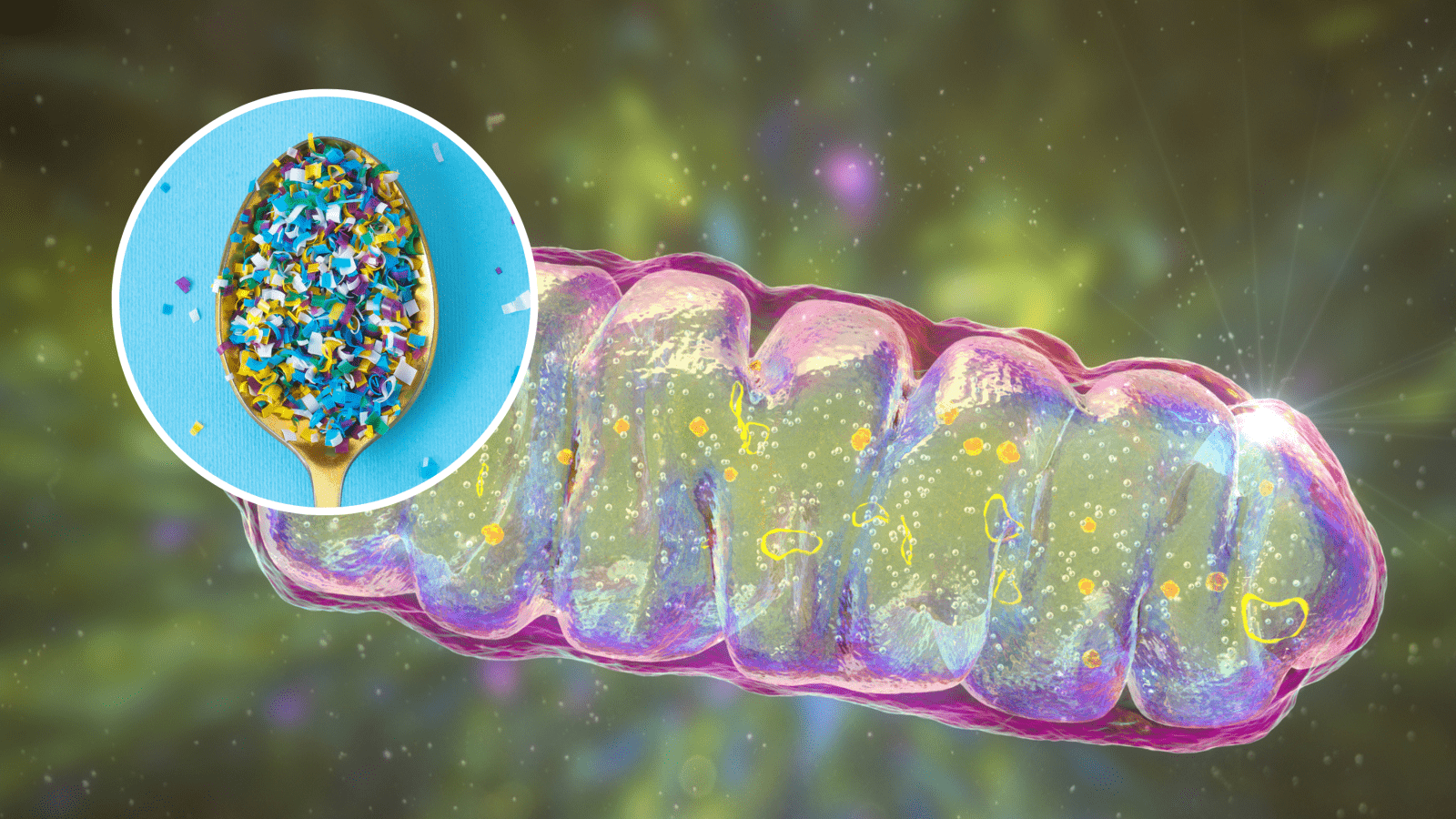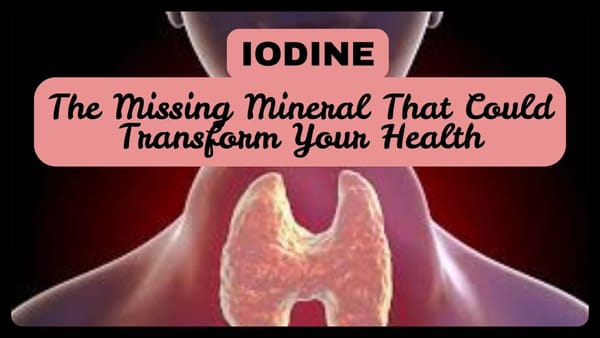Health Threats of Micro-Plastics: What You Need to Know
“It’s pretty alarming,” Campen said. “There’s much more plastic in our brains than I would have imagined or been comfortable with.”

Microplastics (MPs) and nanoplastics (NPs) have quietly become a pervasive issue, with growing evidence that these tiny plastic particles pose a significant threat to human health. Their small size allows them to bypass many of the body's natural defence mechanisms, making human exposure inevitable.
MPs and (NPs) are inhaled through our breath, enter our bloodstream and are internalized by mitochondria. As the ‘power plants’ in every human cell, mitochondria play an essential role by creating energy to drive cellular function across all biological processes. The mitochondria are sensitive to damage and if impaired, the cell cannot effectively perform its functions.
MPs and NPs are thought to pose a ‘significant threat’ to mitochondrial health and function, leading to an increased risk of a wide range of health conditions, such as neurodegenerative diseases.
Understanding Micro- and Nanoplastics
MPs are small plastic pieces less than 5mm in size, while NPs are even tinier, measuring less than 0.1 micrometres. These particles can come from two sources: primary MPs/NPs, intentionally added to products like toothpaste and cosmetics, and secondary MPs/NPs, which form when larger plastic items break down due to environmental factors.
When the size of the plastic becomes smaller and microplastics are formed, they can be absorbed, ingested, or inhaled into the human body through the skin, gastrointestinal system, or lungs. These microplastics can physically block the digestive system, stimulate the mucous membrane, and injure it. Also, when the size of microplastics becomes smaller than 1 micrometre to form NPs, (which are ultrafine plastics), they can pass through the primary tissue barrier in the body, penetrate the capillary blood vessels through the bloodstream, and be dispersed throughout the body.

Routes of Human Exposure
Humans can be exposed to MPs and NPs through various pathways. Ingestion is a major route, as these particles can contaminate our food and beverages. Studies have found MPs in seafood, salt, honey, bottled water, and other foods. Inhalation is another key exposure route, as airborne MPs and NPs can be breathed in, particularly in occupational settings.
Dermal exposure is also a concern, as MPs and NPs can be absorbed through the skin, especially from personal care products containing microbeads.
Health Impacts of Micro- and Nano-Plastics
The metastudy by researchers Dal Yöntem and Müfide Aydoğan Ahbab reveals that MPs and NPs pose a significant threat to human health, primarily through their impact on mitochondria - the powerhouses of our cells. These tiny plastic particles can induce mitochondrial dysfunction, leading to oxidative stress and reduced energy production.
The results of cellular and animal experiments have shown that microplastics can affect various systems in the human body, as follows:
Digestive System: When MPs are ingested, physical irritation to the gastrointestinal tract may eventually cause inflammation resulting in various gastrointestinal symptoms. MPs may cause changes in the intestinal microbiome, resulting in an imbalance between beneficial and harmful bacteria, and various gastrointestinal symptoms such as abdominal pain, bloating, and changes in bowel habits. In addition to their physical effects on the digestive system, MPs can cause chemical toxicity, which involves the absorption and accumulation of environmental toxins such as heavy metals and polycyclic aromatic hydrocarbons. These toxic substances can enter the body through the gastrointestinal tract leading to various gastrointestinal symptoms, including nausea, vomiting, and abdominal pain.
Respiratory System: MPs may cause oxidative stress in the airways and lungs when inhaled, leading to respiratory symptoms such as coughing, sneezing, and shortness of breath due to inflammation and damage. Low blood oxygen concentration can cause fatigue and dizziness. MPs can act as carriers of other environmental toxins, such as polystyrene (PSs), and exposure to high concentrations of PS is detrimental to human lung cells, increasing the risk of chronic obstructive pulmonary disease.
Endocrine System: MPs interfere with the production, release, transport, metabolism, and elimination of hormones, which can cause endocrine disruption and lead to various endocrine disorders, including metabolic disorders, developmental disorders, and even reproductive disorders (i.e. infertility, miscarriage, and congenital malformations). MPs can act as a medium for environmental toxic substances such as bisphenol A, which are absorbed into the body and cause various diseases of the endocrine and reproductive systems.

Reproductive System: In a recent study, microplastics were also found in the placentas of six pregnant women.
Newborns and Infants: A recent report showed that exposure could increase due to feeding bottles and medical devices. Results of animal studies have shown that maternal exposure to MPs affects offspring and toxicity levels of subsequent generations and effects in humans can vary depending on the size, shape, chemical composition, surface charge, and hydrophobicity of microplastic particles.
Immune system: The potential negative effects of microplastics on the human immune system warrant further research. Accumulated exposure to microplastics induced chronic inflammation and homeostasis changes in animal experiments, and a study on human lung cells showed that microplastics can activate innate immunity by regulating the expression of genes and proteins involved in the immune response.
Vascular System: Doctors and Researchers in Naples have warned of potentially life-threatening effects from plastic pollution after finding a substantially raised risk of stroke, heart attack and earlier death in people whose blood vessels were contaminated with microscopic plastics.
The Brain: The recent distribution and uptake of NPs and MPs in animals concluded that these particles can cross the blood-brain barrier - an extremely selective permeability barrier necessary to protect the brain against toxins and regulate the correct balance of neuronal activity. A major focal point of concern arises from the fact that NPs / MPs (especially those with sizes below 20 μm) can access the brain through lymphatics and blood vessels—an organ traditionally deemed untouchable. This could lead to brain damage and dementia.

Current Research Findings and Gaps
The metastudy reviewed over 130 published studies, identifying significant gaps in our understanding of the health impacts of MPs and NPs. For instance, little is known about the presence and effects of NPs in the human body, as detecting these ultrasmall particles has been challenging.
Most research has focused on primary MPs and their smooth surfaces, while secondary MPs and NPs with irregular shapes have received less attention. Cubic, spherical, and rod shapes should be considered when assessing risks to humans and the environment. Sharp microplastic particles can cause toxicity by physically stimulating the human body. In addition, various chemicals are used when synthesizing plastic polymers, depending on the end use, most of which are endocrine disruptors.
Emerging Concerns and Recommendations
The researchers are now calling for urgent, comprehensive research to improve our understanding of the health risks posed by MPs and NPs. They emphasize the need to profile NP exposure to identify critical toxicity and examine the effects of various plastic polymers and their additives.
“If more people were aware of the potential threat of MPs and NPs pollution, and the associated increased risk of life-threatening conditions like cancer and the fatal form of dementia, Alzheimer's, they would almost certainly call for and take more action. Everybody needs to look at their own use of plastic products. Governments and organizations need to develop policies that reduce plastic waste and promote sustainable alternatives. This collective effort will require cross-disciplinary collaboration encompassing environmental science, toxicology, public health, policymaking, and more. This is no longer just about the impact on our planet; we urgently need to find out more about MPs and NPs to safeguard our own and future generations’ health.” - Dal Yöntem and Müfide Aydoğan Ahbab, The Turkish Research Team Study
'Pretty alarming’
In one of the latest studies to emerge – a pre-print paper still undergoing peer review posted online by the National Institutes of Health – researchers found a particularly concerning accumulation of microplastics in brain samples.
An examination of the livers, kidneys and brains of autopsied bodies found that all contained microplastics, but the 91 brain samples contained on average about 10 to 20 times more than the other organs. According to the study’s lead author Matthew Campen, a toxicologist and professor of pharmaceutical sciences at the University of New Mexico, the results shocked him.
The researchers found that 24 brain samples, collected in early 2024, measured on average about 0.5% plastic by weight.
“It’s pretty alarming,” Campen said. “There’s much more plastic in our brains than I ever would have imagined or been comfortable with.”
The study describes the brain as “one of the most plastic-polluted tissues yet sampled”.
Previous estimates indicated that humans are exposed to tens of thousands to millions of MPs annually, or several milligrams daily. The main exposure route could be breathing indoor air and drinking water in plastic bottles. Exposure to MPs through food intake is likely the main exposure source although it remains difficult to provide a detailed estimate due to the lack of research on the contents and internal doses of microplastics in different foods.





